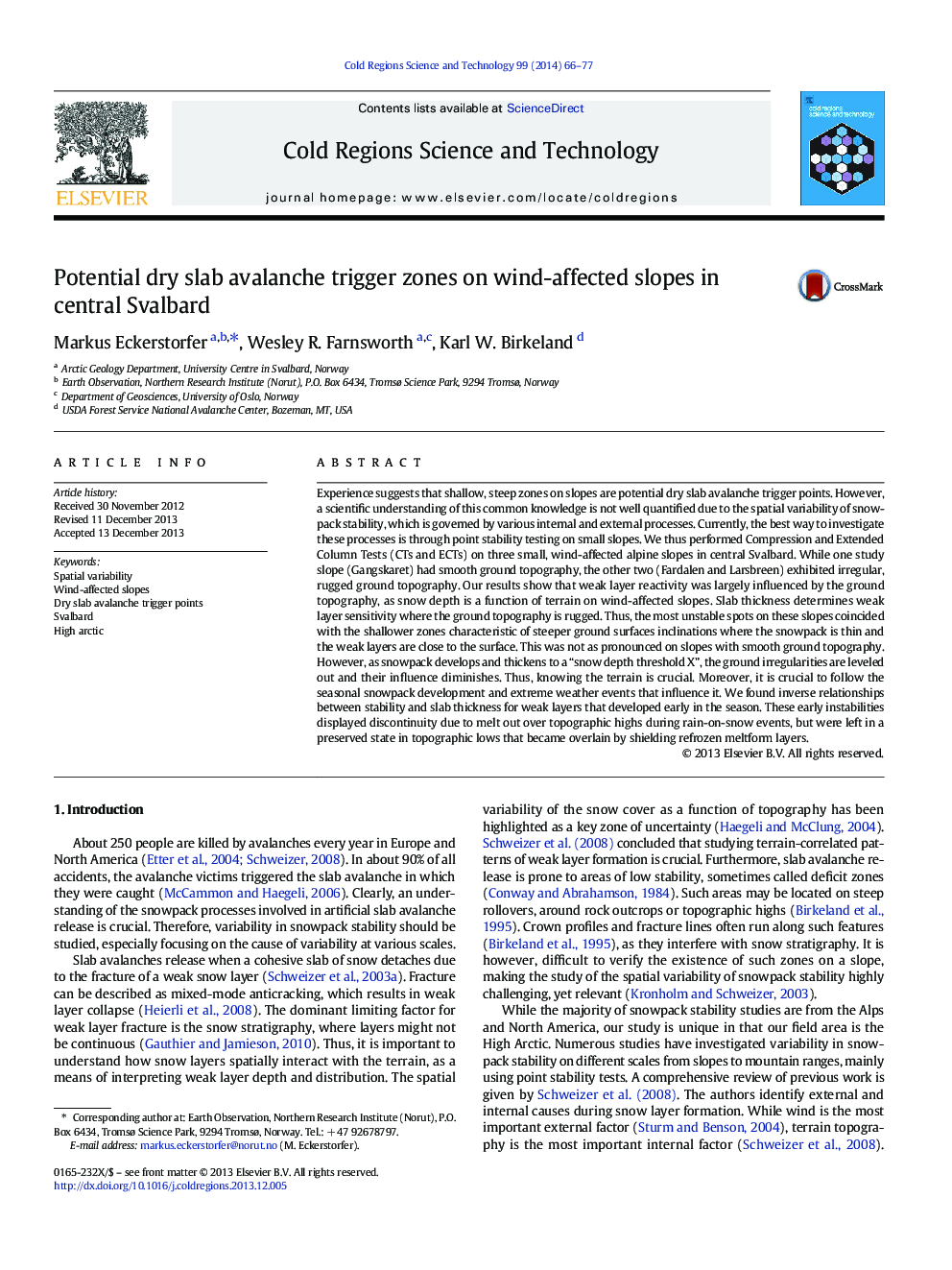| کد مقاله | کد نشریه | سال انتشار | مقاله انگلیسی | نسخه تمام متن |
|---|---|---|---|---|
| 4675792 | 1634463 | 2014 | 12 صفحه PDF | دانلود رایگان |
• We contribute to research of snowpack spatial variability on wind-affected slopes.
• We identified potential dry slab avalanche trigger zones over topographic heights.
• The influence of these topographic heights is diminished when snowdepth X is reached.
Experience suggests that shallow, steep zones on slopes are potential dry slab avalanche trigger points. However, a scientific understanding of this common knowledge is not well quantified due to the spatial variability of snowpack stability, which is governed by various internal and external processes. Currently, the best way to investigate these processes is through point stability testing on small slopes. We thus performed Compression and Extended Column Tests (CTs and ECTs) on three small, wind-affected alpine slopes in central Svalbard. While one study slope (Gangskaret) had smooth ground topography, the other two (Fardalen and Larsbreen) exhibited irregular, rugged ground topography. Our results show that weak layer reactivity was largely influenced by the ground topography, as snow depth is a function of terrain on wind-affected slopes. Slab thickness determines weak layer sensitivity where the ground topography is rugged. Thus, the most unstable spots on these slopes coincided with the shallower zones characteristic of steeper ground surfaces inclinations where the snowpack is thin and the weak layers are close to the surface. This was not as pronounced on slopes with smooth ground topography. However, as snowpack develops and thickens to a “snow depth threshold X”, the ground irregularities are leveled out and their influence diminishes. Thus, knowing the terrain is crucial. Moreover, it is crucial to follow the seasonal snowpack development and extreme weather events that influence it. We found inverse relationships between stability and slab thickness for weak layers that developed early in the season. These early instabilities displayed discontinuity due to melt out over topographic highs during rain-on-snow events, but were left in a preserved state in topographic lows that became overlain by shielding refrozen meltform layers.
Journal: Cold Regions Science and Technology - Volume 99, March 2014, Pages 66–77
